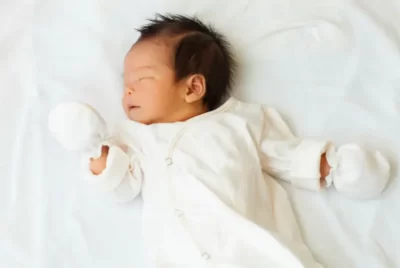Sleep Training 1-Year Old: A Comprehensive Guide
We may earn a small commission for purchases made using our links (not affecting your price).
See our disclosure to learn more.
A 1-year-old child’s general health and development depend on getting enough sleep. However, many parents experience fatigue and frustration due to their child’s sleep issues at this age. They need Sleep Training 1-Year Old no matter what prevents them from falling asleep. Even decisions as simple as how their children should sleep fall under the heavy duty of parents. There are several methods and viewpoints available for sleep training. The article aims to provide a thorough overview of sleep training for 1-year-old children and practical advice on creating a positive sleep environment. By employing these methods, parents can help their children fall asleep independently, improve their sleep quality, and guarantee that the whole family gets the rest they require.
Can sleep training be for 1-year-olds?
Yes! If your kid is at least 12 months old, sleep training can be an option to help with sleep problems brought on by sleep onset connections when a baby falls asleep while being carried, rocked, or fed. The American Academy of Pediatrics (AAP) advises placing the baby in their sleep area after four months when they are still tired yet awake. It helps teach children how to do so independently, lowering the number of overnight awakenings and resulting in more peaceful sleep for the entire family. It can be challenging to switch from rocking, holding, or nursing your baby to sleep to falling asleep independently! Numerous strategies might be helpful if you decide to try sleep training. The choice to implement sleep training in your family ultimately rests with you.
Understanding Sleep Needs at One Year Old:
At one year of age, children require between 11 and 14 sleep hours per day. Individuals’ sleep habits can differ, so paying attention to your child’s unique requirements and indications is important. You can identify symptoms of fatigue in your child by paying attention to their behavior, such as eye rubbing, crying, or moodiness, which can indicate that they need to sleep.
Sleep Training 1-year old
Make the toddler’s bedtime routine.
Your toddler needs the routine to flourish, so creating a dependable and relaxing sleep routine is essential. Only play quietly, turn off all displays, dim the brightness, and switch on low, rolling white noise an hour or so before lights out. White noise distracts toddlers from usual internal sleep-stealers, like teething discomfort and a loud TV. You can give toddlers the security, confidence, and comfort they need to fall asleep and remain asleep.
Read and create a picture book.
At the age of 1-year-old , your toddler loves different things. You can make a book personalized for them with pictures and illustrations showing a day from their perspective, including the bedtime routine. Then read it aloud regularly, before and during the day, to help your child understand what is expected of them when it is time for bed.
Give a gentle goodbye.
With toddlers who want you to stay with them until they fall asleep, use the “Twinkle Interruptus” technique. Say “Oh my gosh!” when you’re going to give your partner a goodnight kiss. Just a moment! I have to check things out! I’ll return soon. Then leave the room for a short while before coming back. Tell your toddler how patient they were when you got back. Then, continue the bedtime ritual while finding a reason to leave again. Repeat it several times, extending the time your baby is kept waiting. You’ll probably discover over multiple evenings that your child has slept off while waiting for your return.
Set a good routine for your toddler at bedtime.
Setting a clockwise bedtime routine can teach your child when it’s time to get out of bed and shine if they habitually get out of bed before the sun. It is the essence: When it’s time to start the day, set your wake-up light. It educates your toddler when it is OK to leave the room. They know they must continue to sleep if the light is not on.
How to sleep training your 1-year-old
The right toddler sleep training method depends on your kid’s habits and what you feel comfortable with.
Cry it out method.
The “cry-it-out” method is putting your kid to bed and letting her scream at herself without your help or visit. Your kid will not experience its long-term effects, and she will forget it in a few years. It can be useful. But it can be difficult to keep up with such cries, especially once your toddler can express her wants verbally and say things like “Come back!” or “I need you!” If your child has already changed to a bed or can climb out of her cot, CIO could be more difficult to apply since she can get up and find you if she doesn’t like the new bedtime routine.
Ferber Method
Since it involves allowing your baby to scream for a certain amount of time before coming in to check on her, the Ferber approach is also known as a “graduated extinction” method. As time passes, the gaps between visits get a little longer, so you’re coming in less frequently and giving your kid more responsibility for going to sleep. The Ferber approach can be a good compromise between letting your child scream it out and more gentle sleep training techniques, including spending time in your kid’s bedroom. Even if you aren’t with her as she goes off to sleep, she could feel more secure and acceptable if she knows you’ll return to check on her later.
Chair Method
The chair method includes sitting next to your toddler in a chair until they fall asleep, then leaving the room. Each night, you move the chair a little further to the door until you are out of the room completely, and your baby falls asleep on her own. The chair method is easy for toddlers to accept since it is gentler. You will unlikely need to listen to your toddler’s cries for long, making it easier on you. The downside is that it could take longer than techniques like cry it out or Ferber, and your baby could become frightened and distressed in the middle of the night if she discovers you’ve left the room.
Bedtime
Bedtime fading includes adjusting your 1-year-old’s daily periods to help her go to sleep more quickly on her own. Instead of putting her to bed at the regular time, wait until she begins to display signs of fatigue. It is believed that if your kid is exhausted, she will sleep better. Following that, for a few nights of putting her to bed at that time, you can progressively push back bedtime by 15 minutes until she sleeps when you want her to.
Can you use sleep training for 1-year-old for naptime?
Using the same sleep training technique for naps as you use at nighttime is OK. However, prolonged sobbing can take away from the nap and prevent your kid from getting the necessary daytime sleep.
You have a couple of options on how to approach it. One solution is to start nap training at lunchtime once you’ve mastered sleep training at nighttime. Another option is to schedule a time during naptime to try the sleep training method. If it doesn’t work, try another method, like pushing your child about in the pram until she falls asleep and then putting her back in her bed or crib.
Does a 1-year-old need sleep training?
Only you can decide when you see that your toddler’s current bedtime and sleep habits are good and helpful for your family. If not, then they need to be adjusted. Bedtime battles are part of every toddlerhood, but waking up more than two or three times per night. Severe bedtime resistance, crying, or tantrums that cause the bedtime routine to run longer than 60 minutes mean your baby needs sleep training.
How long will the sleep training of toddlers take?
Sleep training will make a big change in your toddler. Your child can come around to the new plan within a few days, but it is common for the process to take longer. Consult your toddler’s pediatrician if you need help to improve within two to four weeks. Remember that every sleep training method does not work for every child, and you may need to change your method to see results.
Tips for sleep training for 1-year-old
1. Get ready to get started with your 1-year-old for sleep success.
2. Keeping your eye on your toddler to develop healthy sleep habits will benefit her for years.
3. Be consistent for your toddler to hold steady, even when things are hard.
4. Prepare your toddler for the upcoming changes. You can keep it simple and make a plan to say goodnight.
5. Project confidence by staying cool and calm on the outside.
6. Pick the right bedtime by 7:30 or 8 p.m.It necessarily leads to better sleep.
7. Get into a solid nighttime routine. It will help your1-year-old whether the sleep training changes.
8. Offer a comfort object such as a stuffed animal, blanket, or another lovie, and invite her to pick one out to bring into bed.
9. Tackle the pre-bed checklist. Anticipate your toddler’s need for a glass of water! Nightlight on.
10. Bring back to bed if your toddler gets up.
11. Keep your toddler active during the day. Everyone sleeps better after they have been busy.
12. Avoid screen time with your toddler before bed because Screens make it harder for little ones to fall asleep.
Conclusion
Sleep training 1-year old needs patience, consistency, and a deep understanding of the toddler’s individual needs. Parents can encourage healthy sleep habits by establishing a consistent bedtime routine, creating a sleep-inducing environment, and gradually allowing the child to self-soothe. Remember that each child is unique, and adjusting to the new sleep training techniques may take time. Parents can help their one-year-olds develop the skills they need for independent and restful sleep with persistence and a supportive approach.




